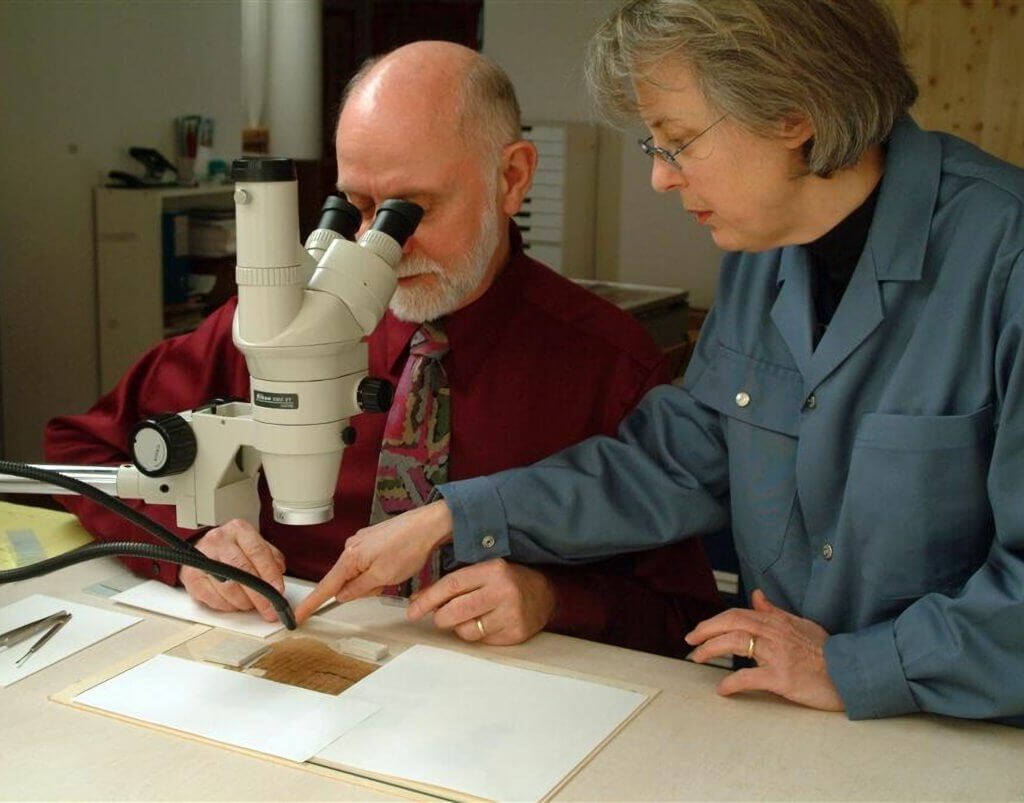The Gospel of Judas, an apocryphal text from early Christianity, has been the subject of new findings in Egypt that challenge the traditional narrative about Judas Iscariot. Through advanced scientific methods such as radiocarbon dating and ink analysis, the manuscript’s authenticity has been confirmed, offering a different interpretation of Judas’s role in relation to Jesus.
Scientific Analysis of the Gospel of Judas: Authenticity and Meaning
The history of early Christianity holds numerous secrets, and one of the most fascinating is the Gospel of Judas.
For centuries, the name Judas Iscariot has been synonymous with betrayal, especially for handing Jesus over to the authorities. However, a series of discoveries made in Egypt has reopened the debate about the role this apostle played in the Christian narrative. This document, analyzed with cutting-edge scientific methods, appears to offer a different interpretation of the relationship between Jesus and his most questioned disciple.
The Unexpected Discovery and Authenticity Analysis
The origin of this manuscript dates back to the 1970s when an Egyptian treasure hunter discovered a codex that time had hidden for about 1,700 years near the Nile River, close to El Minya.
No one suspected that among the poorly preserved papyrus fragments was a text that had long been believed lost. Eventually, the codex came into the hands of a local antique dealer, who failed to sell it due to its high price. Over time, the Maecenas Foundation acquired the collection of papyri in 2001 and closely collaborated with the National Geographic Society for its study, dissemination, and restoration.
This apocryphal gospel describes an unusual story about Judas: it states that it was Jesus himself who asked him to hand him over to the authorities.
Such an idea radically changes the conventional reading, in which Judas appears solely as the quintessential traitor. However, the fact that this narrative differs from the biblical canon does not necessarily invalidate it; instead, it offers possible new perspectives on the historical understanding of Judas’s figure.
Authenticity Analysis: Paleography, Textual Content, and Ink Examination
The process to certify the veracity of the Gospel of Judas involved various scientific tests. Among them stand out radiocarbon dating, paleographic evaluation, and, decisively, the chemical analysis of the ink.
According to experts consulted by the National Geographic Society, the combination of these examinations pointed to a legitimate origin of the document dating back to the 3rd or 4th century AD. To begin with, paleography specialists examined the form of the Coptic letters present on the papyrus.
This type of analysis compares the writing with samples from the era and determines its stylistic consistency. In this case, the calligraphy matches that used during the late Roman Egypt period, which is highly significant.
On the other hand, the team from McCrone Associates, under the direction of microscopist Joseph G. Barabe, carefully studied the ink. Initially, they observed the presence of two components: one black (soot black) and one brown.
The former matches the traditional formula used in Ancient Egypt, composed of soot and a gum binder. However, the absence of sulfur in the brown ink raised doubts since ferrogallate ink from the Middle Ages typically contained this element.
Similarly, the discovery of an Egyptian marriage certificate from the same era, analyzed by scientists at the Louvre Museum, proved to be the cornerstone for confirmation. This document showed a similar ink composition, which helped support the credibility of the Gospel of Judas. Although it is not considered absolute proof of its authenticity, it concludes that the hypothesis of forgery becomes unlikely.
Historical Perspective and Possible Implications: A New Light on Judas Iscariot
The Gospel of Judas is framed within the complex variety of apocryphal texts that circulated in the early centuries of Christianity. Thus, the possibility emerges that some early Christian communities had a different interpretation of Judas’s identity and mission. This line of thought invites reflection on how Christian theology was shaped diversely before the consolidation of orthodoxy.
On the other hand, the dissemination of this document has sparked vigorous debate. While some currents defend its authenticity and historical value, others consider the text to offer a marginal view. Additionally, questions arise about the Gnostic influence that may have shaped its content. These controversies promote ongoing research and underscore the difficulty of studying such a distant period with modern tools.
As a result of these studies, the apostle Judas does not emerge exclusively as the villain that popular tradition has described for centuries. Rather, a complex character is drawn, probably loved and understood by Jesus, according to the interpretation suggested by the apocryphal gospel. However, this reading requires a careful approach, mindful of the multiplicity of Christian currents that coexisted in Antiquity.
Relevance for Historical Research
Consequently, the analysis of the Gospel of Judas illustrates the need to confront traditional sources with new discoveries that do not always fit into the majority narrative.
Documentary archaeology, combined with forensic science, offers the possibility to review what we believed to be settled. In this way, the debate on the roots of Christianity, the formation of doctrine, and the figure of Judas as a testimony to the clash between the official version and other interpretations arising in different contexts is enriched.
The Gospel of Judas continues to generate passion, skepticism, and, above all, academic curiosity. Its authenticity has not been indisputably demonstrated, but the scientific examinations conducted so far strongly indicate that it is not a mere modern forgery.
Rather, it is placed in an early stage of Christianity, a setting of doctrinal diversity and resonant theological debates. Therefore, the manuscript contributes to a broader panorama of Christian history and challenges readers and experts to rethink the monolithic view of Judas Iscariot.
Maestro Ruada – Gospel of Judas and Scientific Investigations





